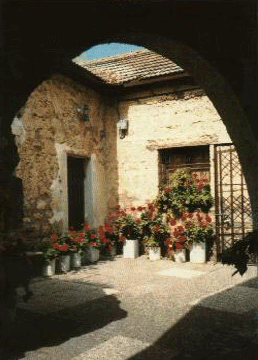Khan Museum in Hadera
April 10th 2014
 If you’re interested in seeing how a community began as a farming settlement in the late 19th century and flourished into a thriving city in the modern State of Israel, the Khan Museum in Hadera has a story to tell you. When the city of Hadera was founded in 1891, the Ottoman Empire ruled the Land of Israel. The site, and the sandstone building that houses the museum, was originally an Ottoman farmstead. It served as temporary housing for the founders of the city, primarily secular Jews from Lithuania and Latvia who immigrated as members of the Hovevei Zion (Lovers of Zion) Zionist organization.
If you’re interested in seeing how a community began as a farming settlement in the late 19th century and flourished into a thriving city in the modern State of Israel, the Khan Museum in Hadera has a story to tell you. When the city of Hadera was founded in 1891, the Ottoman Empire ruled the Land of Israel. The site, and the sandstone building that houses the museum, was originally an Ottoman farmstead. It served as temporary housing for the founders of the city, primarily secular Jews from Lithuania and Latvia who immigrated as members of the Hovevei Zion (Lovers of Zion) Zionist organization.
Today, Hadera, located approximately 28 miles south of Haifa, is home to over 90,000 people, many of whom are immigrants from Russia and Ethiopia. Hadera’s Khan Museum is the historical repository for the city. The name of the museum comes from the Arabic word for a roadside inn.
The museum’s 11 rooms house five permanent exhibitions, all designed to make the history of Hadera come alive for visitors. Period rooms cover the earliest days from 1890 to 1896, followed by the city’s growth from 1897 to 1920. A separate room depicts a typical living room in pre-independence Israel. The period from 1949 to 1958, the earliest years of the State of Israel, is illustrated by the layout and furnishings of a typical apartment of the time. In the outdoor exhibition area, look for the olive oil press, the smithy workshop, a garden and an intriguing tombstone from 1917.
Within the walls of the museum is the Central Synagogue of Hadera, which is among the oldest synagogues in the city. In pre-state Israel, the earliest settlers of Hadera used the Central Synagogue as a fort, when they sought shelter during attacks by the area’s Arab populations.
The city’s archives are also housed in the main building. Guided tours feature actors who reenact scenes from the city’s history. Historical documentary films that elaborate on the city’s 70-year-long history are screened in English, Russian and Hebrew. A library and educational workshops are offered for both children and adults. The site has a specially-designed entrance near the western gate for visitors in wheelchairs.











